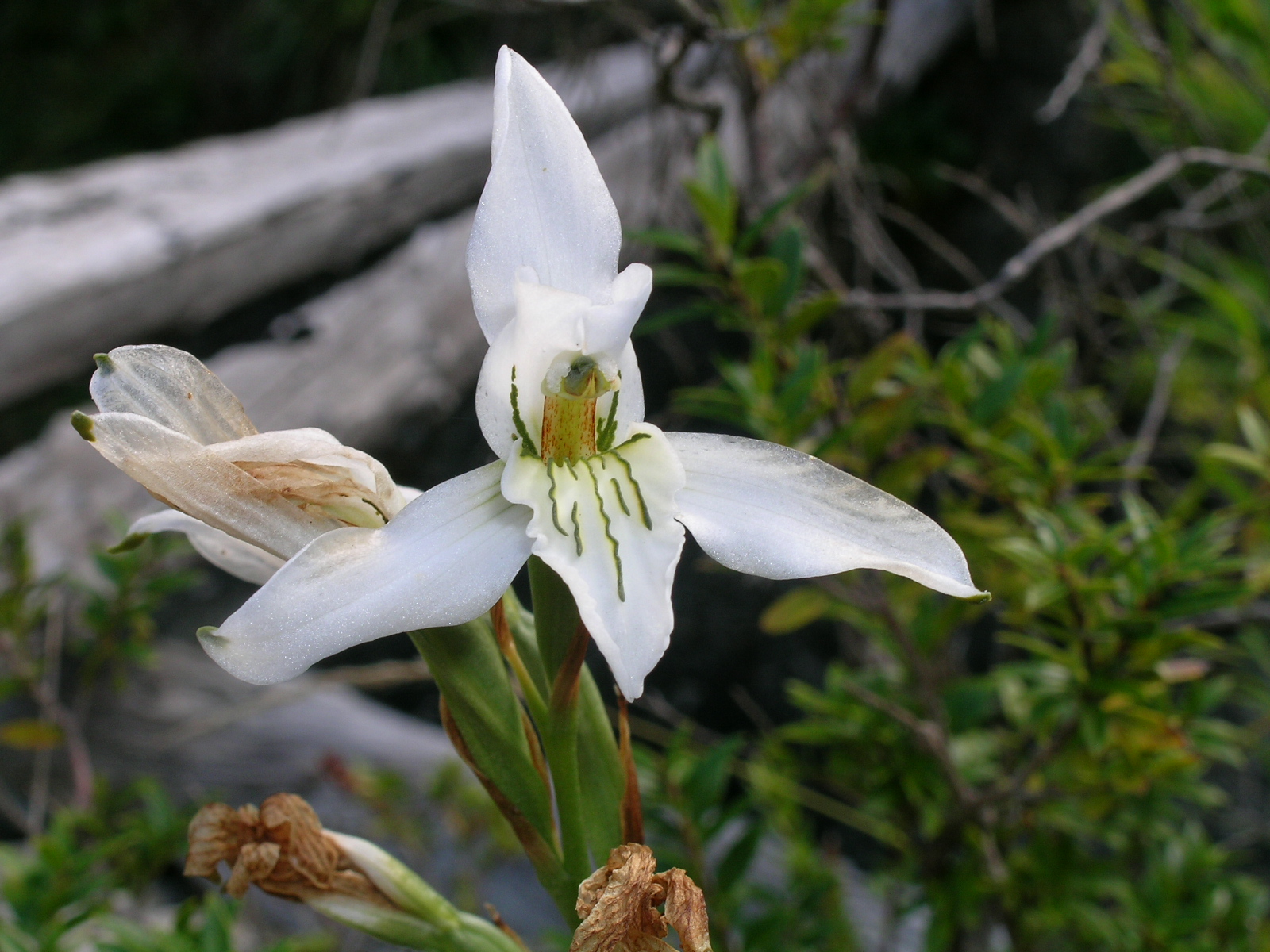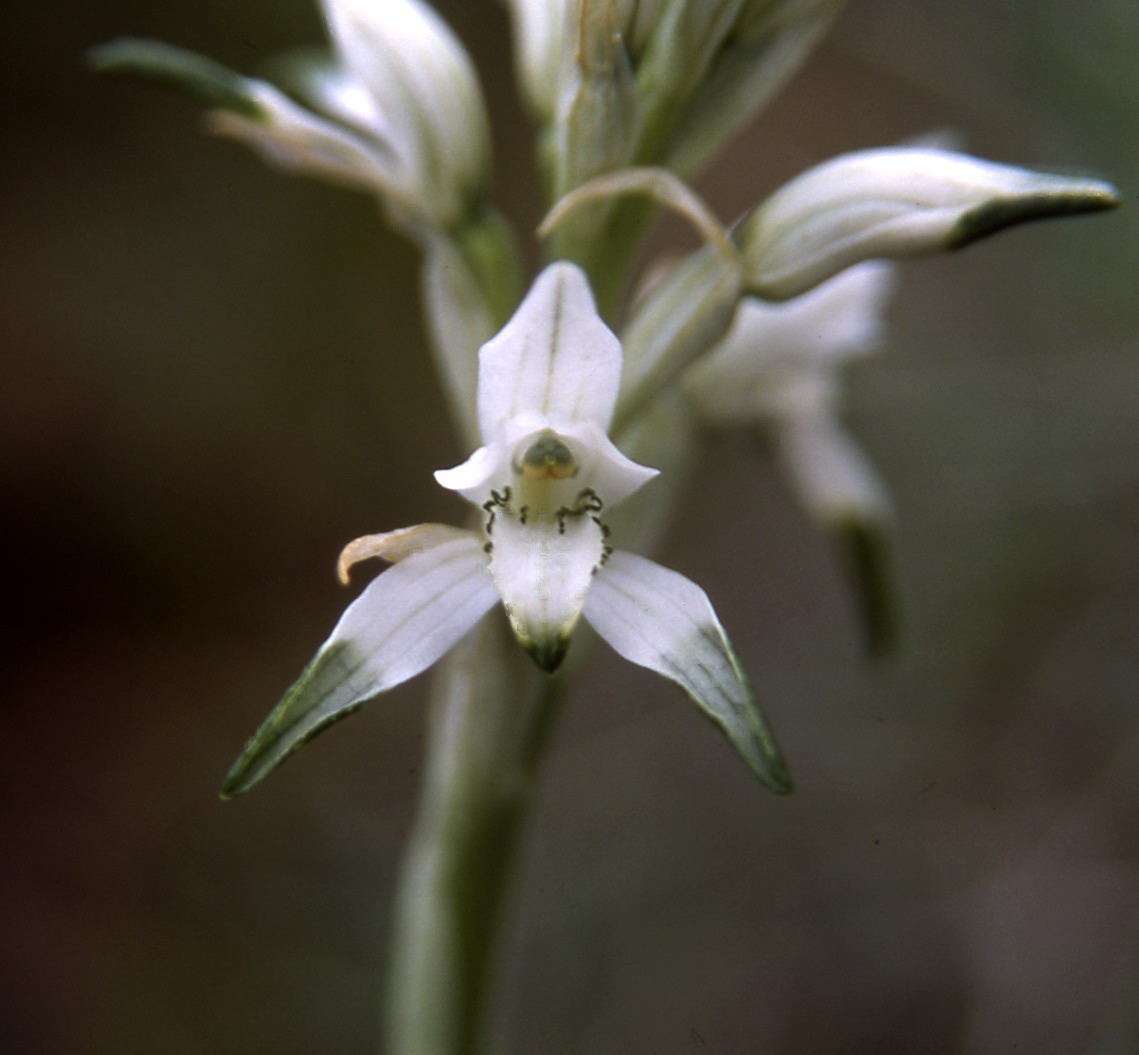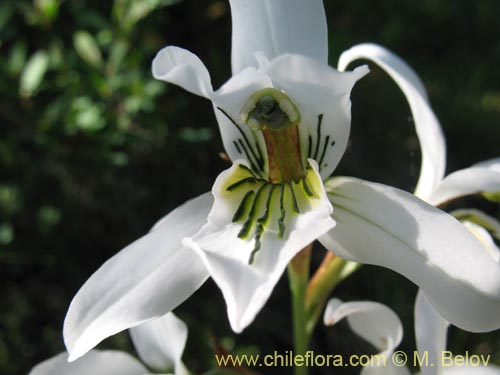Chloraeeae
Chloraea cristata
The Tribe Chloraeeae from the orchid family (Orchidaceae) is made up of nearly 80 species. They come exclusively in South America. While they were considered part of the Australian Diurideae long, recent studies showed that they are more closely related to the mainly Neotropical Cranichideae.
Features
The Chloraeeae are perennial, herbaceous plants, they do not grow as epiphytes. The fleshy, sometimes thickened tuberous roots are surrounded by velamen. The spiral on the shoot arranged leaves are rolled in the bud ( convolut ), between leaf blade and shoot there is no separating tissue. The leaves are glabrous, the leaf blade is extended, elongated and pointed ends.
The inflorescence is a terminal raceme, sometimes reduced to only one flower. The peduncle is covered by some bracts. The flowers are 'upside, the petals are usually not grown together, only the lateral, outer two can be fused together at the base in some species. Often, the petals are conspicuously striped lengthwise or reticulate veined. The lip is over the remaining petals shaped and colored differently. It can be simple or three-lobed. The column is hairless and may be widened laterally ( " winged "). The stamen contains two or four pollinia. The capsule fruit is oblong-shaped and stands upright.
Dissemination
The species of the tribe Chloraeeae found only in South America. The area extends mainly along the Andes of Peru in the north to the southern tip of the continent. Other species are found in the southeast of Brazil, Uruguay and Argentina.
System
The Tribe Chloraeeae is part of the subfamily Orchidoideae. Long it was run as a subtribe within the tribe Chloraeinae Diurideae. As close relatives Dressler suspected the Caladeniinae. In addition to the South American genera he expected the New Caledonian Megastylis to Chloraeinae. Only studies of DNA showed that parts of Megastylis are not closely related to the South American genera, except for Megastylis glandulosa, which was relocated to as Achlydosa glandulosa. Also not belong here Codonorchis, which is now organized as a separate tribe. Thus, the Chloraeeae include four genera:
- Bipinnula
- Chloraea
- Gavilea
- Geoblasta
In addition to the classification as a tribe on the same rank alongside the Cranichideae there is also the consideration to treat these four genera within the subtribe as Cranichideae. The phylogenetic relationships of the genera among themselves are not yet fully understood. The genus is paraphyletic Chloraea, the other three genera arise in the cladogram within Chloraea.


.jpg)
.jpg)


.jpg)


